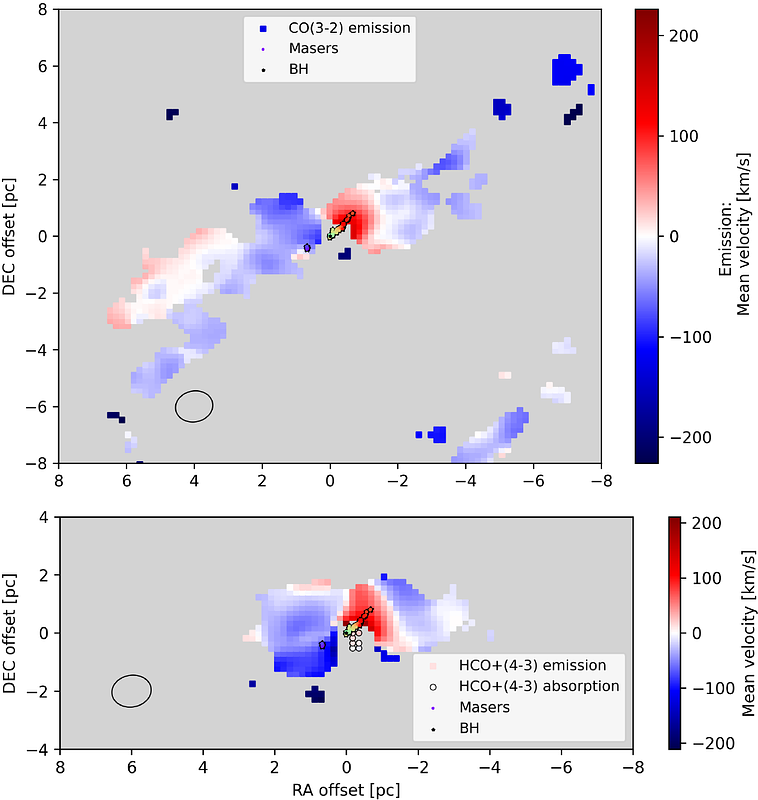Decoding the molecular torus of NGC 1068: Insights into its structure and kinematics from high-resolution ALMA observations

Decoding the molecular torus of NGC 1068: Insights into its structure and kinematics from high-resolution ALMA observations
V. Gámez Rosas, P. van der Werf, J. F. Gallimore, V. Impellizzeri, W. Jaffe, S. García-Burillo, S. Aalto, L. Burtscher, V. Casasola, F. Combes, C. Henkel, I. Márquez, S. Martín, C. Ramos Almeida, S. Viti
AbstractWe dissect the kinematics and morphology of the molecular gas within the near-nuclear region of NGC 1068 to understand the mechanisms in the central AGN that might be fueling it, and the impact of its energy output on the surrounding molecular gas. We present high angular and spectral resolution ALMA observations of the HCO$^+$4->3 and CO 3->2 molecular lines in the near-nuclear region of the prototype Seyfert 2 galaxy NGC 1068. The spatial resolution (1.1~pc) is almost two times better than that of previous works studying the same molecular lines at the same transitions and is the highest resolution achievable with ALMA at these frequencies. Our analysis focuses on moment maps, position-velocity (PV) diagrams, and spectra obtained at the position of the nuclear continuum source, along with a simple kinematic model developed using the 3DBarolo software. Our observations reveal significant asymmetry between the eastern and western sides of the nuclear disc in terms of morphology, velocity, and line intensity. The broad lines seen in the inner 2 pc could be accounted for by either beam smearing or highly turbulent gas in this region. Outside this radius the mean velocities drop to $\pm$30 km/s, which cannot be explained by asymmetric drift. We find low velocity connections extending to 13 pc suggesting interactions with larger scale structures. The CO/HCO$^+$ line ratio at the nucleus reported here are extremely low compared to values in the literature of the same galaxy at lower spatial resolutions.